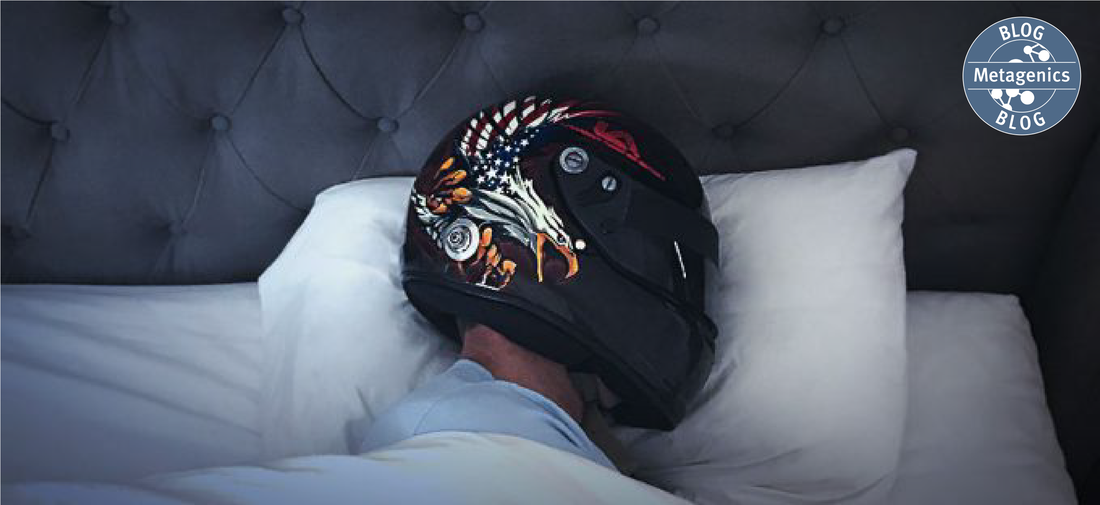|
Let’s set a scene. It’s 12:34 AM, and you’ve been lying in bed for about two hours, wide awake. You tell yourself to relax and go to sleep, but it doesn’t happen. Your mind is racing. “What is wrong with me?” you ask yourself. Oh no! You forgot to put the clothes in the dryer. “I guess I’ll just do that first thing in the morning.” The madness continues for another hour before you finally see the back of your eyelids.
Sleep issues plague countless people in the world, and for a variety of reasons. Those may be due to diet, lifestyle, or anxiety, among others. Lack of sleep can lead to health issues including confusion, lethargy, and memory loss. It’s hard to attack the day when your mind is in a fog. Maybe that’s why the coffee industry is booming? Personally, I experienced bouts of insomnia throughout my life and usually at the worst time possible. This is not ideal for someone battling Crohn’s disease and driving race cars at 180 mph, but I have some good news! There are a few lifestyle changes you can make to help improve the quantity and quality of your sleep. After tireless research and trial and error, I’ve created a plan to help get myself (and you) back on track. Functional Medicine was a critical aspect of my ability to obtain healthy, restful sleep. Before working with a medical provider to create a functional lifestyle plan, I was tired, dizzy, sluggish, and worn out! This functional lifestyle optimisation transformed all aspects of my health and daily life. However, sleep isn’t entirely about nutrition and diet. There are changes you can make to further your ability to get at least 7 ½ hours each night. Start with adjustments to your nighttime routine. Finish daily chores (dishes, trash, walking the dog, etc.) about two hours before your target sleep time. Next, work on nightly hygiene requirements and clothing. Brush your teeth, take a shower or bath if needed, finish bowel movements, and put on comfortable clothes. Give yourself about an hour to an hour and a half for winding down afterwards. Limit exposure to artificial light at this point. Too much, and your body will think it’s daytime. Hormones like cortisol will continue to get released, which keeps you up. But remember, cortisol is an essential hormone to help wake you in the morning! Get your surroundings in order. Make sure your room is dark with no artificial light. Cover up any small illumination from electronic devices (masking tape works well) and install blackout shades over the windows. Your body has various light receptors in the eyes and skin to tell itself it’s time to go to sleep. Keeping the room dark supports that process and promotes the release of hormones, such as melatonin. If you are easily startled at night by sounds, like me, then creating an atmosphere with continuous background noise or none at all can help tremendously. It’s hard to eliminate noise entirely, so work with various resources like your AC unit, sound machines, or your phone. I use an app on my iPhone that plays constant brown noise to smooth sudden sounds throughout the night. Temperature also plays a significant role. Keeping the room on the colder side will allow you to enjoy your bed and covers. No one wants to sweat during the night! Usually, you’ll find between 65 to 72 degrees as the perfect temperature. Don’t freeze yourself, though! Make sure you’re comfortable. Let’s talk about the bed. Humans spend a significant portion of their lives sleeping, so make your bed a sanctuary. I’ve tried various mattresses, and for me, a medium stiffness memory foam mattress is the perfect softness and support for a great night’s sleep. Find one that’s right for you, but make sure it limits your exposure to chemicals. Recapping. At this point you are physically ready for bed, lights are dimmed or off, the sound is consistent or eliminated, and the temperature is perfect. As you slide into bed, you are ready to relax and calm the mind. You are now set to enter the sleep zone! But how do you get there? Pick an activity (or multiple) such as reading, meditation, talking to a loved one, or journaling for the next hour. Avoid the TV, phone (yes, that means no Instagram, Twitter, Snapchat, Facebook…the list goes on), and anything work-related. Everyone is different, and some things that work for you may not work for someone else. That’s OK! For example, my ideal scenario is meditating and reading. About an hour before my target sleep time of 10 PM, I start with a guided meditation using the Head space app on my iPad. After meditating, I’ll read for 5 to 45 minutes. Sometimes, I find myself falling asleep only a few minutes after a long day of training or racing. While reading, I make sure to focus on the book and not alternative thoughts. My mind starts to relax, and before I know it, my eyes get heavy. At that point I know it’s time to fall asleep! Here are a few extra notes:
I know things aren’t always perfect, especially if you travel, have stress, or are burning the candle at both ends. All I can say is that your daily life will be much more productive with proper sleep. You’ll surprise yourself with the amount of work or chores you can accomplish in a short time when your mind and body are functioning at full capacity! Sleep is a crucial component of a happy, healthy life. Plus, it helps your memory! Your body requires rest to recover and rebuild. It enables you to regain the strength and stamina needed to approach each day with confidence and vigour to achieve your maximum potential. Lawson Aschenbach is a seven-time professional sports car racing champion. He started racing karts at the age of 8 and went on to win state, national, North American, and four Grand National Championships. In 2005, he finished on the podium in his first sports car race and then burst out onto the scene in 2006, winning the SPEED World Challenge GT Championship in his rookie year. Aschenbach has over 35 professional race wins and currently competes in the IMSA WeatherTech SportsCar Championship and Pirelli World Challenge Series. Lawson Aschenbach is a paid consultant and guest writer for Metagenics.
2 Comments
24/4/2024 10:34:26 am
Geländer sind nicht nur praktisch, sondern auch gesetzlich vorgeschrieben, um die Sicherheit von Menschen in Gebäuden oder öffentlichen Bereichen zu gewährleisten und Bauvorschriften zu erfüllen.
Reply
Leave a Reply. |
Categories
All
Archives
April 2024
|
|
Join Our Community
|
|
Amipro Disclaimer:
Certain persons, considered experts, may disagree with one or more of the foregoing statements, but the same are deemed, nevertheless, to be based on sound and reliable authority. No such statements shall be construed as a claim or representation as to Metagenics products, that they are offered for the diagnosis, cure, mitigation, treatment or prevention of any disease. |



 RSS Feed
RSS Feed